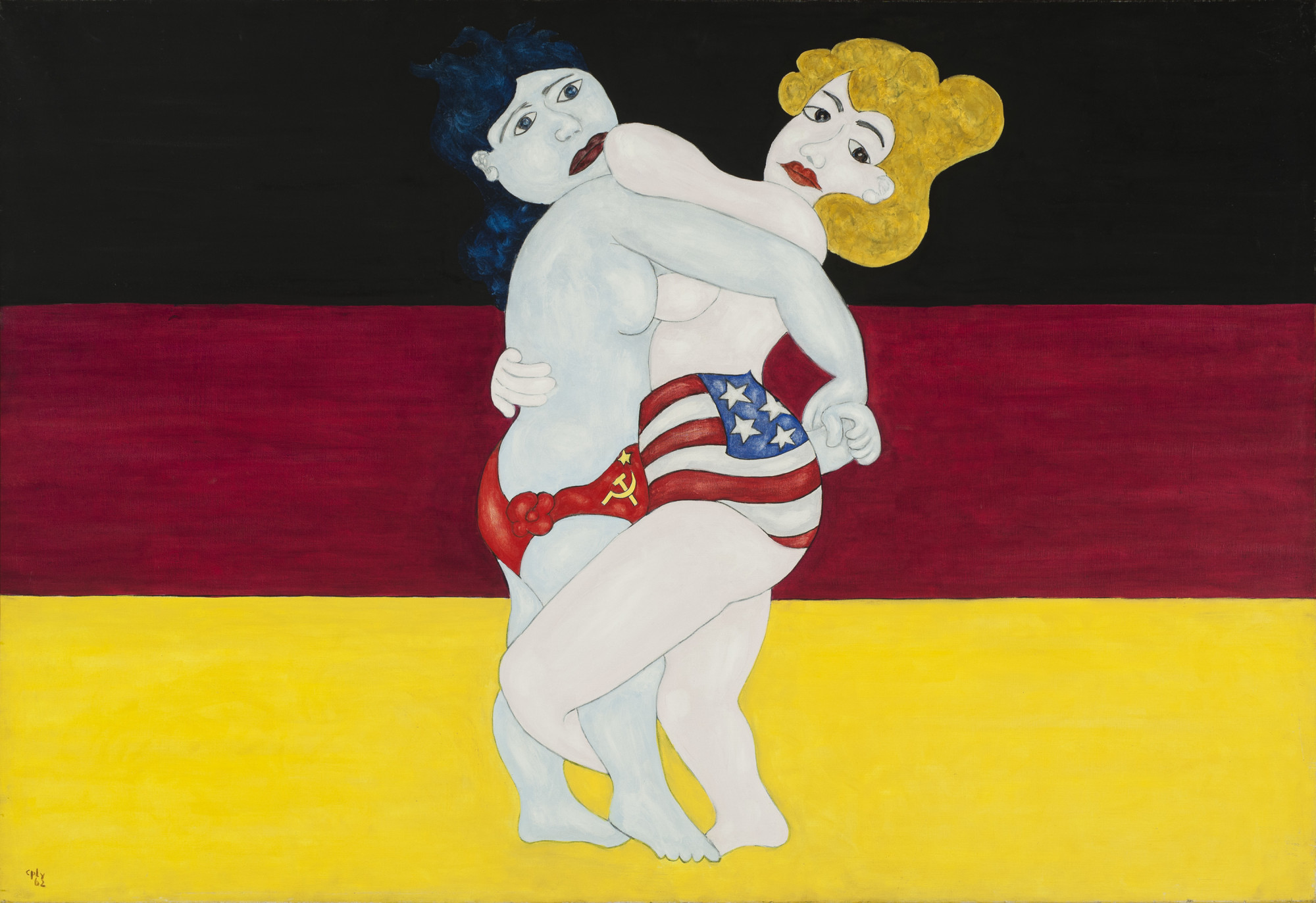
The William N. Copley Estate is extremely pleased to announce the first major United States survey of Copley’s work will be held at the Menil Collection in 2016. Titled The World According to CPLY, the exhibition will be accompanied with a comprehensive monograph produced in partnership with the Prada Foundation. Details for the exhibition’s secondary venue will be shared shortly.
The full Menil press release:
American artist William Copley (1919–1996), creator of madcap narrative paintings, drawings, and installations, was both an insider and an outsider. Known by his nom de plume CPLY, he was a self-taught artist pushing the limits of art-world decorum, as well as a collector, patron, and connector of some of the most important artists of the 20th century, in particular European Surrealists and American Pop artists. Organized in collaboration with the Prada Foundation in Milan, Italy, and featuring approximately 100 paintings and works on paper, William N. Copley: The World According to CPLY is the first comprehensive presentation of the artist’s work in an American museum. The exhibition and related book examine the arc of Copley’s career from the early 1950s to the 1990s, tracing the development of his painterly style and his continual experiments with line, color, pattern, allegory, and humor.
In Paris in the early 1950s, Copley developed a unique and ribald figurative style that bucked prevailing trends toward abstraction. As Copley was developing his distinctively guileless, heart-on-sleeve storytelling voice, his early works from the 1950s and 1960s—many of which were made in France—took inspiration from Surrealist painting, Mexican folk art, and American cartoon and silent-movie imagery. Throughout his career, Copley repeatedly returned to subjects like nudes, cars, nationalism, and the doggerel poetry of Robert W. Service, the “Bard of the Yukon.” Later works illustrate Copley’s continual stylistic evolution and his abiding interest in political and psychosexual themes, surrealist visual punning, and vaudevillian Americana. Stylistically diverse, these works also reflect an awareness of developments in contemporary art and his role as a link between European Surrealist and American Pop circles.
The adopted son of a wealthy newspaper magnate, Copley was the black sheep of his politically conservative family, embracing leftist causes and rebelling against convention. Introduced to painting and Surrealism by his artist brother-in-law, John Ployardt, he established contact with some of the most important international Surrealist artists then living in obscurity in the United States—Max Ernst, Man Ray, and Marcel Duchamp. In 1948, Copley and Ployardt opened the Copley Gallery in Beverly Hills, and after it operated for six months, the gallery’s commercial failure became an important source for Copley’s personal collection. Personally making good on his promises of guaranteed sales, he amassed one of the most important collections of Surrealist art in the world.
Considering Copley’s activities as a collector and producer of his contemporaries’ work, the Menil Collection’s nearby Surrealism galleries feature paintings formerly in Copley’s personal collection, including works by Wifredo Lam, Jean Tinguely, Man Ray, Max Ernst, and René Magritte. In addition, The World According to CPLY features the six SMS (Shit Must Stop) portfolios of prints, multiples, and sound recordings Copley published in a lively, artist-filled office on New York’s Upper West Side. The SMS portfolios aimed to bypass museums and galleries and to make contemporary art accessible by subscription at a reasonable price. Among the artists included in the portfolio are Marcel Duchamp, Man Ray, Richard Hamilton, Meret Oppenheim, Richard Artschwager, LaMonte Young, Bruce Nauman, Walter de Maria, and Yoko Ono.
The exhibition at the Menil is curated by Toby Kamps, Curator of Modern and Contemporary Art.